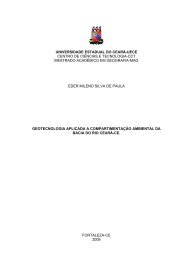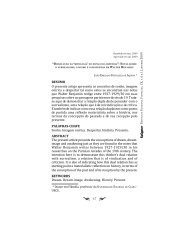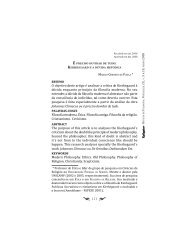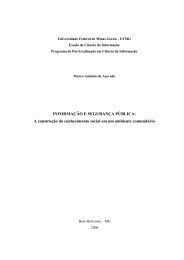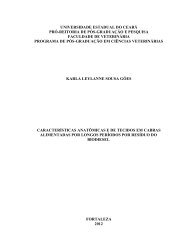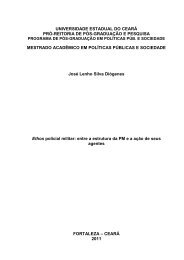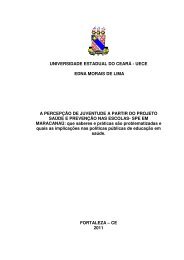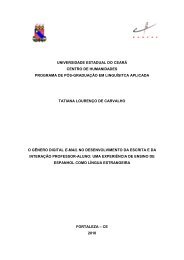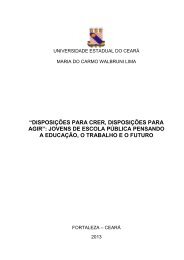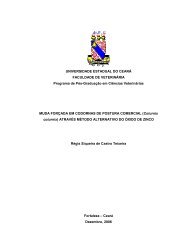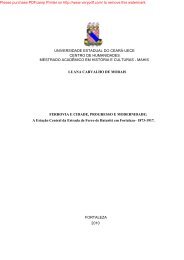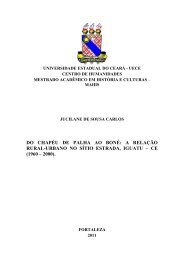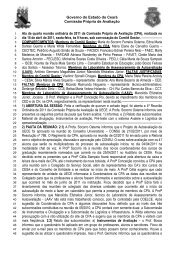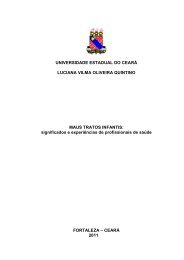Avaliação da temperatura, umidade e vacinação in ovo
Avaliação da temperatura, umidade e vacinação in ovo
Avaliação da temperatura, umidade e vacinação in ovo
Create successful ePaper yourself
Turn your PDF publications into a flip-book with our unique Google optimized e-Paper software.
ABSTRACT<br />
Temperature is a very important factor affect<strong>in</strong>g embryo development,<br />
hatchability and post hatch performance. Optimum <strong>in</strong>cubation temperature is normally<br />
def<strong>in</strong>ed as that required to achieve maximum hatchability. This work was carried out to<br />
verify the effects of different <strong>in</strong>cubation temperatures on hatchability, hatch weight,<br />
hatch time and embryo mortality of Japanese quail eggs (Coturnix japonica). A total of<br />
800 eggs were divided <strong>in</strong> eight experimental groups (n=100) that were <strong>in</strong>cubated at<br />
different temperatures (34, 35, 36, 37, 38, 39, 40 and 41ºC). The other <strong>in</strong>cubation<br />
conditions were identical for all groups, 60±5% of relative humidity and egg turn<strong>in</strong>g<br />
every two hours up to transference to the hatcher at 15 <strong>da</strong>ys of <strong>in</strong>cubation. The results<br />
showed that fertile hatchability was higher for eggs <strong>in</strong>cubated at 37 and 38ºC, 76.67 and<br />
80.76%, respectively. Eggs <strong>in</strong>cubated at 34ºC did not hatch and those <strong>in</strong>cubated at 35<br />
and 41ºC showed very poor hatchability. The other temperatures had hatch rates from<br />
50.33 to 57.73%. There were higher hatch weights <strong>in</strong> eggs <strong>in</strong>cubated <strong>in</strong> high<br />
temperatures (38-41°C) compared to the ones <strong>in</strong>cubated <strong>in</strong> the lower ones (35-37°C).<br />
There was an enormous difference <strong>in</strong> the hatch<strong>in</strong>g time accord<strong>in</strong>g to the <strong>in</strong>cubation<br />
temperature. The difference of time between the groups of eggs that hatched earlier<br />
(40°C) compared to the ones the hatcher later (35°C) was 156.3 hours or 6.51 <strong>da</strong>ys.<br />
Embryos seemed to be resistant to embryo death <strong>in</strong> high temperatures until 40°C at the<br />
early period of <strong>in</strong>cubation, however the same was not observed at the later stages of<br />
<strong>in</strong>cubation when high temperatures (39-41°C) promoted elevated levels of embryo<br />
mortality (late death and pipped eggs).<br />
Key words: temperature, <strong>in</strong>cubation, Japanese quail, eggs<br />
33



